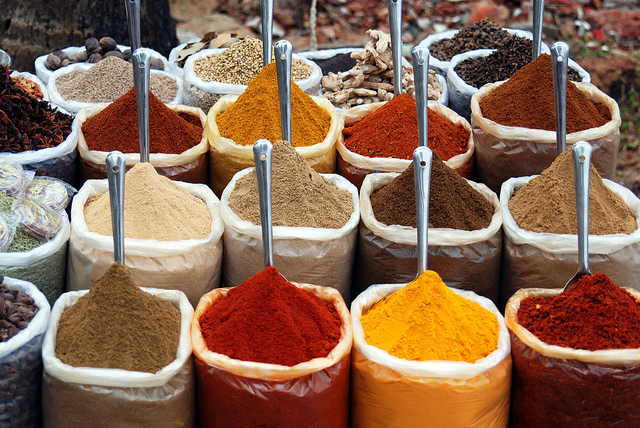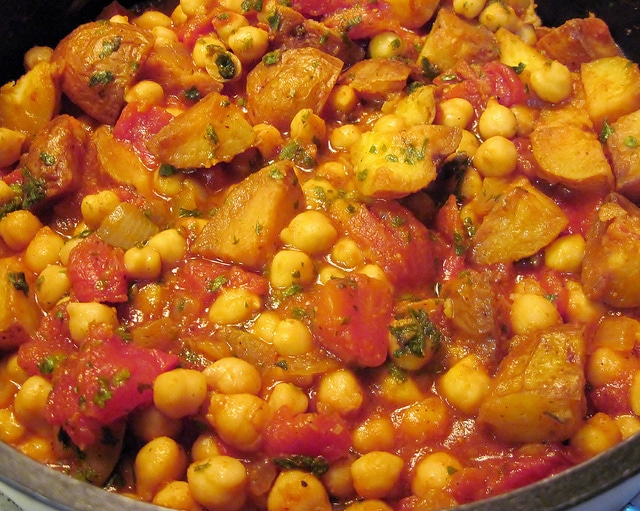India has a rich history when it comes to cuisine. Centuries ago explorers from distant lands sought the shores of India in search of an overwhelming host of pungent spices sure to send your taste buds dancing for joy or writhing in a blaze of fiery submission. Celebrated though the food may be, I admittedly approached it with an ignorance that was certain to land me in some dicey situations. I lay before you now my introductory experience to India’s exotic dishes – a landscape I continue to navigate with a healthy mixture of naïve curiosity and paralyzing trepidation.

The base knowledge was there. Traveling through Malaysia, I had taken a liking to the quintessential Indian food of flavorful curries and spicy dahls. Essentially my thought was this: pair anything with freshly baked naan, chipati or paratha and you really can’t go wrong; however, living in India for several months was going to force me to expand my horizons. Sitting in the first restaurant in Kolkata — oddly known as The Broadway — I realize I may be in over my head.
The first thought that occurs to me as I breeze through the menu is “no pictures?!” As I dive in a bit further, realizing I understand very few of the dishes described, I make the safe play, “I’ll have the yellow dahl, steamed rice and three chipatis, please.” After all, you don’t want to look like a novice on your first meal in India.
“And for drink?” the waiter inquires.
“What is India’s trademark beer?”
His suggestion of a King Fisher has me enticed. It’s the most expensive on the menu at 125 Rupees ($2 USD), but it’s a celebration after all.
The beer arrives in a bottle roughly the size of my forearm. I pour the first pot and it barely clears the neck. It’s noon. This may be more than I bargained for. The dahl arrives soon after and I dig in without reservation. The chipati is still steaming straight from the hot plate and it is delicious. The meal is finished well before the beer, and three pots later I’ve cleared its contents and am feeling fine – at 8% alcohol per volume, more fine than I had expected.

I come to take many meals at this restaurant, as it is on the ground floor of my accommodation. As my comfort level grows and the King Fisher’s flow, my orders become more and more adventurous. With a little help from the wait staff — it’s sometimes a team effort to overcome the language barrier — I try a heap of dishes I have trouble pronouncing. To my surprise I enjoy all of them, and over the course of just a few days feel I’ve got somewhat of a handle on the cuisine scene here in Kolkata.
Here’s what I have learned and gathered so far:
- When in doubt, it’s probably dahl – channa, moong, tuvar and masoor are all just names of different colored dahl’s made from a different type of pea or bean.
- Masal can mean just about anything – it’s a generic term that can be used interchangeably with curry to indicate the dish is cooked using different spices.
- Aloo means potato – and as the potato is a staple of Indian fare you see aloo all over the menu: aloo gobi, aloo paratha, aloo tikki. Potato’s are generally harmless and tasty, so a relatively safe bet.
- Paneer means cheese – following the same rule as the potato, you’ll see this come up often. As a big lover of all things cheese, I was a bit disappointed with India’s bland and tasteless unfermented interpretation.
- Right hand is right – If you intend you eat with your hands — as is custom in India, but not expected of foreigners — be sure to do so with your right hand. The left hand is considered dirty and only to be used for less sanitary dealings.
- Oh, one last piece of sagely wisdom, all systems go on the King Fisher’s. Just one is enough to overcome any initial reservations you may have.
Contributed by guest author Ryan Slyzuk. Photo credits in order: Indian spices. Photo courtesy of sara marlowe and Aloo Channa Masala. Photo courtesy of SaucyGlo.

Jessica Festa is the editor of the travel sites Jessie on a Journey (http://jessieonajourney.com) and Epicure & Culture (http://epicureandculture.com). Along with blogging at We Blog The World, her byline has appeared in publications like Huffington Post, Gadling, Fodor’s, Travel + Escape, Matador, Viator, The Culture-Ist and many others. After getting her BA/MA in Communication from the State University of New York at Albany, she realized she wasn’t really to stop backpacking and made travel her full time job. Some of her most memorable experiences include studying abroad in Sydney, teaching English in Thailand, doing orphanage work in Ghana, hiking her way through South America and traveling solo through Europe. She has a passion for backpacking, adventure, hiking, wine and getting off the beaten path.








